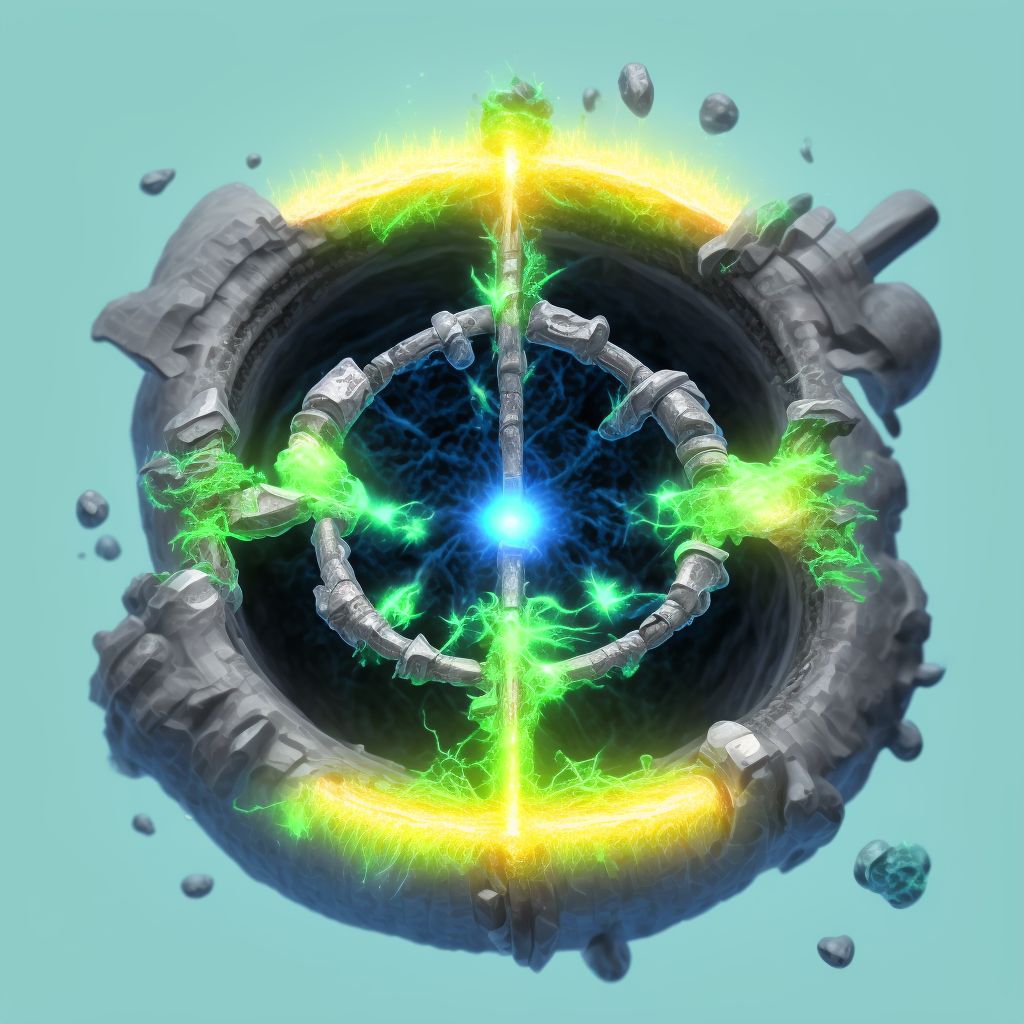
Nondisplaced spiral fracture of shaft of unspecified tibia, subsequent encounter for open fracture type IIIA, IIIB, or IIIC with delayed healing Save
ICD-10 code: S82.246J
Disease category: S82.246: Nondisplaced spiral fracture of shaft of unspecified tibia
Nondisplaced Spiral Fracture of Shaft of Unspecified Tibia: Understanding and Managing Delayed Healing
A nondisplaced spiral fracture of the shaft of the tibia refers to a specific type of bone injury where the tibia, or the shinbone, breaks in a spiral pattern without any significant displacement. This fracture is commonly seen in athletes or individuals involved in high-impact activities. It is crucial to understand the subsequent encounter for open fracture type IIIA, IIIB, or IIIC with delayed healing to effectively manage the condition.
Delayed healing is a common concern for individuals with open fractures, especially those classified as type IIIA, IIIB, or IIIC. These fracture types involve open wounds, severe bone damage, and the risk of infection. It is essential to closely monitor and manage these fractures to ensure proper healing.
When dealing with delayed healing of an open fracture, various factors should be considered. Firstly, immobilization plays a crucial role in promoting bone healing. The affected limb should be immobilized using casts, splints, or external fixation devices to minimize movement and facilitate the healing process.
In addition to immobilization, proper nutrition is vital for optimal bone healing. A balanced diet rich in calcium, protein, vitamins, and minerals is necessary to support bone regeneration. It is advisable to consult with a healthcare professional or a registered dietitian to create a personalized nutrition plan that promotes healing.
Furthermore, maintaining good hygiene and wound care is essential to prevent infection and aid in the healing process. Regular cleaning of the wound, proper dressing, and following medical advice regarding wound care are crucial steps to facilitate healing and reduce the risk of complications.
- Immobilize the affected limb using casts, splints, or external fixation devices.
- Ensure a balanced diet rich in calcium, protein, vitamins, and minerals to support bone healing.
- Maintain good hygiene and follow wound care instructions to prevent infections.
It is important to note that the information provided in this article is for informational purposes only and should not be used as a substitute for professional medical advice. If you are experiencing any symptoms or have concerns about your fracture, it is recommended to consult with a healthcare professional for proper evaluation and guidance.
In summary, a nondisplaced spiral fracture of the shaft of the tibia, subsequent encounter for open fracture type IIIA, IIIB, or IIIC with delayed healing requires careful management. Immobilization, proper nutrition, and good hygiene are key factors in facilitating healing and reducing complications. Seek professional medical advice for personalized treatment and guidance regarding your specific condition.
Treatment of Nondisplaced spiral fracture of shaft of unspecified tibia, subsequent encounter for open fracture type IIIA, IIIB, or IIIC with delayed healing:
Treatment Options for Nondisplaced Spiral Fracture of Shaft of Unspecified Tibia with Delayed Healing
Dealing with a nondisplaced spiral fracture of the shaft of the tibia can be a challenging experience. When coupled with delayed healing, it becomes even more crucial to explore the right treatment options to promote proper recovery and minimize complications. Here are some effecti...
To see full information about treatment please Sign up or Log in